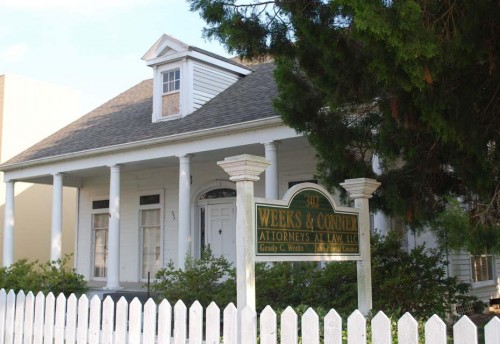
William Clark Sr.
June 29, 2010
Senator baffled by Obama’s view on La. oil
July 1, 2010The price of gasoline was not an issue for Houma residents in the 19th century, and for good reason – they didn’t own automobiles. Most people living in Terrebonne Parish’s only municipality traveled around downtown by walking. As a result, most 19th century homes and businesses were built within walking distance.
Nearly 175 years later, the location of these historic buildings make for the perfect walking tour, and the Houma Area Convention and Visitors Bureau has assembled a list of 44 must-see attractions in Downtown Houma.
Among them is what is believed to be Houma’s oldest residence at 302 School St. Built in 1840, the historic home was occupied by two of Houma’s mayors, including the first – N.H. Rightor. Elward Wright, mayor from 1928-1946, occupied the home in 1918. Wright was an attorney and campaign manager to U.S. Sen. Allen J. Ellender.
Also built in 1840 was Houma’s first gentlemen’s club at 317 Goode St. It was later used as a private residence and in 1916 a second story and wooden porch were added. Over the years, the location was home to Johnny Foolkes, a legendary figure in Terrebonne Parish. As a federal game warden, he was warned to stay out of Plaquemines Parish or he would be shot. He accepted the challenge and a shootout took place. The building is currently the home of the Terrebonne Folklife Cultural Center.
One of Downtown Houma’s most noticeable structures is the two-story, triangular shaped building commonly known as “Smokey Row.” The brick building was constructed in 1908 to replace wooden structures damaged in the fire of 1892. Historians say the wooden building did not actually burn, but smoked during the fire. As a result, the name Smokey Row stuck.
Architecturally, it is Houma’s contribution to the flatiron style. A mural was painted on the building as a background for the feature film “Crazy in Alabama.”
Hidden among the towering buildings of modern Downtown Houma is a cemetery for the non-Catholic population.
The Magnolia Cemetery at 8064 Main St. was established in 1884 for Houma’s few non-Catholics. The area was settled mostly by French Catholics who were interred in cemeteries located to the rear of their churches.
Located at the intersection of Church and Verret streets is St. Francis de Sales Cathedral of the Diocese of Houma-Thibodaux. The magnificent gothic-style church was completed in 1937 on property donated by R.R. Barrow and contains the original stained glass windows. Behind the cathedral, is the St. Francis de Sales Cemetery – another interesting stop on the historic walking tour.
Houma’s Historic District stretches from Canal to Barrow streets and from Verret Street to Park Avenue. The Houma Downtown Development Corporation and the Houma Area Convention and Visitors Bureau have developed a brochure highlighting the sites on Houma’s Downtown Walking Tour. A copy is available at the tourist information center in Gray.
For more on these and other historic sites in Terrebonne Parish, call (985) 580-7200 or visit houmatourism.com.
Houma’s oldest residence, built in 1840, is now the offices of Weeks & Conner.






